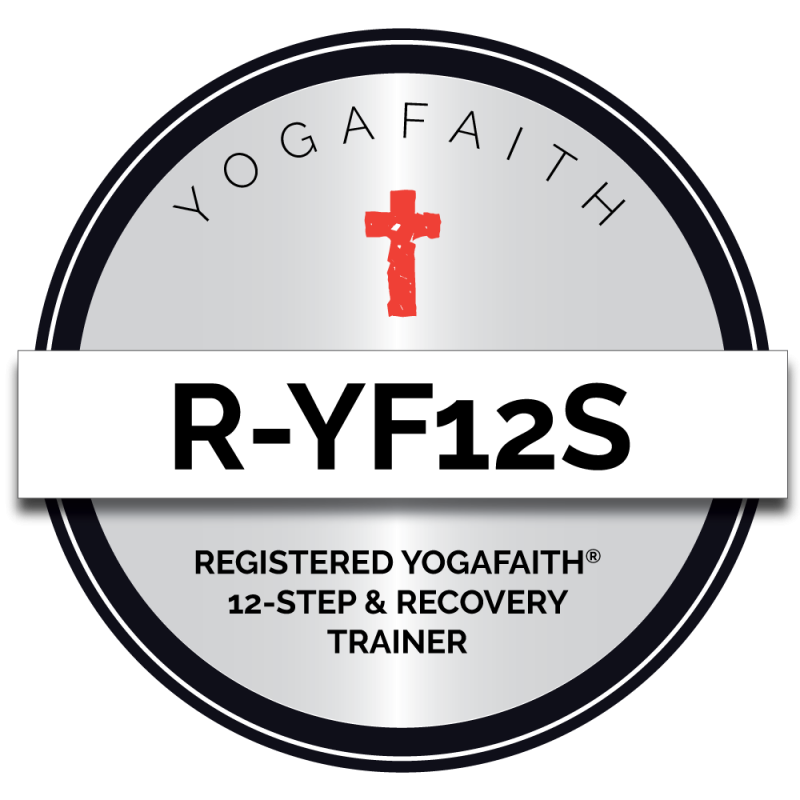AA refers to alcohol however, this information is for all addictions.
Addiction Has A New Definition – It Is A Disease, Not Just Bad Choices Or Behaviors
Addiction is a chronic brain disorder, and not merely a behavioral problem or simply the result of taking the wrong choices, according to the American Society of Addiction Medicine (ASAM), which has given addiction a new and long definition. ASAM says that addiction is much, much more than a behavioral problem involving excessive drugs, sex, gambling or alcohol.
When most of us witness compulsive and harmful behaviors in family members, friends, and even public figures, we generally focus on the use of the substance or the obsession target and their behaviors as the problem.
Dr. Michael Miller, former president of ASAM, who oversaw the development of the new definition, said:
“At its core, addiction isn’t just a social problem or a moral problem or a criminal problem. It’s a brain problem whose behaviors manifest in all these other areas. Many behaviors driven by addiction are real problems and sometimes criminal acts. But the disease is about brains, not drugs. It’s about underlying neurology, not outward actions.”
In its web site, ASAM stated:
“Research shows that the disease of addiction affects neurotransmission and interactions within reward circuitry of the brain, leading to addictive behaviors that supplant healthy behaviors, while memories of previous experiences with food, sex, alcohol and other drugs trigger craving and renewal of addictive behaviors.”
Dr. Raju Hajela, former president of the Canadian Society of Addiction Medicine and chair of the ASAM committee on the new definition, said:
“The disease creates distortions in thinking, feelings and perceptions, which drive people to behave in ways that are not understandable to others around them. Simply put, addiction is not a choice. Addictive behaviors are a manifestation of the disease, not a cause.
Choice still plays an important role in getting help. While the neurobiology of choice may not be fully understood, a person with addiction must make choices for a healthier life in order to enter treatment and recovery. Because there is no pill which alone can cure addiction, choosing recovery over unhealthy behaviors is necessary.” Christian Nordqvist
Addiction
‘Addictions and compulsions are destructive behaviors that an individual acquires as a method of coping with the pressures of life. Some addictions have genetic components and are passed down through biological families. Alcohol and drug addictions are examples of genetic conditions. Addictions can be linked to survival reactions in response to family trauma.’
‘Sex addictions and eating disorders can have roots in emotional, physical, or sexual abuse. Addictions such as overwork, gambling, overspending, smoking, and compulsive exercise appear to be the result of bad habits. Most addictive behaviors are maladaptive responses to unresolved trauma.’
Trauma is a fact of life. Veterans and their families deal with the painful aftermath of combat; one in five Americans has been molested; one in four grew up with alcoholics; one in three couples have engaged in physical violence. Such experiences inevitably leave traces on minds, emotions, and even in biology. Sadly, trauma sufferers frequently pass on their stress to their partners and children.
In The Body Keeps the Score, renowned trauma expert Bessel van der Kolk describes the effects of traumatic stress, revealing how it literally rearranges the brain’s wiring—specifically areas dedicated to pleasure, engagement, control, and trust.
Alcoholism is an illness, an obsession of the mind coupled with an allergy of the body.
Big Book of Alcoholics Anonymous, Dr. Silkworth
Sadly, if an addictive substance or behavior is introduced at a young age when the brain has not fully developed it will be forever changed and geared to seek the pleasure received by using the substance or acting on the behavior.
There is no general agreement on the exact definition but a good place to begin three simple bullets. Addiction is manifested in:
- Behavior that is motivated by emotions ranging along the craving to compulsion spectrum.
- Continued participation in the behavior in spite of adverse consequences.
- Loss of control over the behavior.
There are four fundamental beliefs that nearly every addict has. These are:
- I am, at the core, a bad, unworthy person.
- Nobody could ever love me if they truly knew who I am.
- No one will ever be able to meet my needs; therefore, I must meet my own needs.
- The addictive agent is my greatest need.
Addiction is a disease of isolation.
What Addiction is not:
- It is not a lack of willpower
- It is not a lack of moral character

Future suffering can be avoided, Yoga Sutra 2:16
STEP 1
We admitted that we were powerless over alcohol–that our lives had become unmanageable.
Principles & Virtues: Acceptance, Admission of Defeat, Open-mindedness, Willingness, Humility
Scripture:
- “I know that nothing good lives in me, that is, in my sinful nature. For I have the desire to do what is good, but I cannot carry it out.” Romans 7:18
- “I know, O LORD, that the way of human beings is not in their control, that mortals as they walk cannot direct their steps” Jeremiah 10:23 NRS
- “For my iniquities have gone over my head; like a heavy burden they are too heavy for me.” Psalm 38:4
- “Oh, what a miserable person I am! Who will free me from this life that is dominated by sin and death?” “Thank God! The answer is in Jesus Christ our Lord” Romans 7:24-25 NLT
- “What a wretched man I am!” Isa 6:5
The Serenity Prayer – Serenity, Acceptance, Courage and Wisdom
God grant me the serenity
To accept the things I cannot change;
Courage to change the things I can;
And wisdom to know the difference.
Living one day at a time;
Enjoying one moment at a time;
Accepting hardships as the pathway to peace;
Taking, as He did, this sinful world
As it is, not as I would have it;
Trusting that He will make all things right
If I surrender to His Will;
So that I may be reasonably happy in this life
And supremely happy with Him
Forever and ever in the next.
Amen.
Reinhold Niebuhr 1942
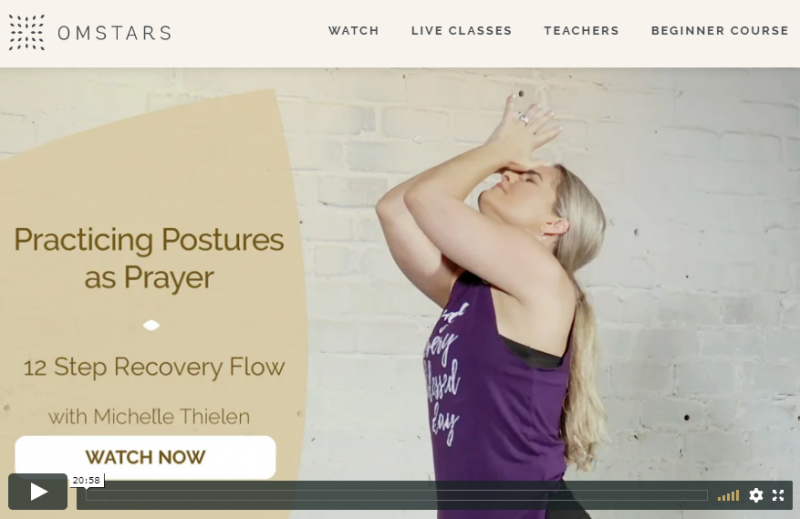
See our Partner Page to receive 30 days free of Omstars. Enjoy YogaFaith and 2500 other videos.
Alcoholism is an illness, an obsession of the mind coupled with an allergy of the body.
Big Book of Alcoholics Anonymous, Dr. Silkworth
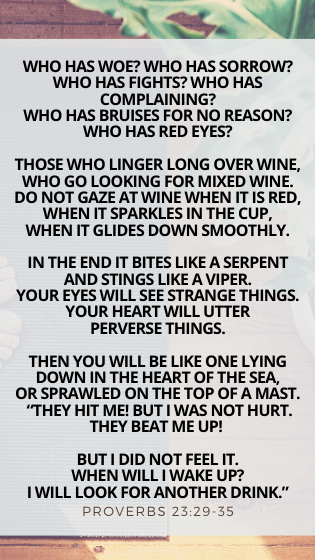
What Are the Twelve Steps?
Because the 12 Steps were first created centered on God, YogaFaith simply explores the original roots of the program through the lens of Christ.
- We admitted we were powerless over alcohol - that our lives had become unmanageable.
- Came to believe that a Power greater than ourselves could restore us to sanity.
- Made a decision to turn our will and our lives over to the care of God as we understood Him.
- Made a searching and fearless moral inventory of ourselves.
- Admitted to God, to ourselves, and to another human being the exact nature of our wrongs.
- Were entirely ready to have God remove all these defects of character.
- Humbly asked Him to remove our shortcomings.
- Made a list of all persons we had harmed, and became willing to make amends to them all.
- Made direct amends to such people wherever possible, except when to do so would injure them or others.
- Continued to take personal inventory and when we were wrong promptly admitted it.
- Sought through prayer and meditation to improve our conscious contact with God as we understood Him, praying only for knowledge of His will for us and the power to carry that out.
- Having had a spiritual awakening as the result of these steps, we tried to carry this message to alcoholics, and to practice these principles in all our affairs.
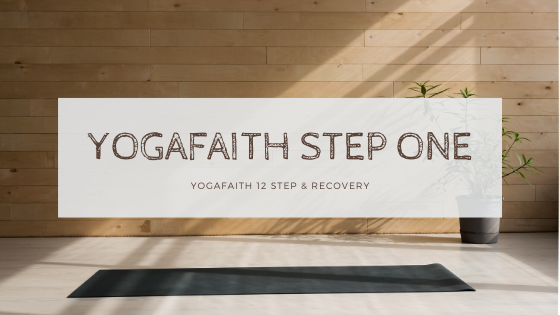
YogaFaith and Step One of 12 Steps
Meditations and Asana for YogaFaith 12-Step
In all our practices we strive for an ever-deepening understanding and pray for the wisdom to apply them to our lives.
A portion of YogaFaith 12-Step and Recovery Training, the main ideas suggested in each of the 12 steps is highlighted. They are then paired with Biblical verses which can be used to expand the meaning of each step. Finally, asanas or yoga postures, are recommended which also amplify the meaning of each of the 12 steps.
STEP ONE – We admitted we were powerless over _______________ and that our lives had become unmanageable.
- Powerlessness – Rely on God’s power and guidance – Become humble (All Addictions)
- Acceptance – Admit need for help - surrender your will to the will of God (All Addictions)
- Compulsion to control and fix – Let Go and Let God – Trust in Him (Al-Anon)
- Detachment – Learn to take the focus off others – mind my own business (Al-Anon)
BIBLE VERSES – STEP ONE
Surrender - Proverbs 19:21 Many are the plans in a man’s heart, but it is the Lord’s purpose that
prevails.
Powerlessness - John 10:27 “My sheep listen to my voice; I know them and they follow me.”
Humility - 1 Peter 5:6-7 Humble yourselves, therefore, under God’s mighty hand, that he may lift
you up in due time. Cast all your anxiety on Him because he cares for you.
Trust (Al-Anon) Psalm 62:8 Trust in Him at all times; you people; pour out your heart before
Him; God is a refuge for us.
Detachment (Al-Anon) John 8:36 “So if the Son sets you free, you will be free indeed.”
YOGAFAITH POSTURES - STEP ONE
Seated Postures – Guidance, Surrender
- Seated twists
- Forward folds
Kneeling Postures – Humility, Submission
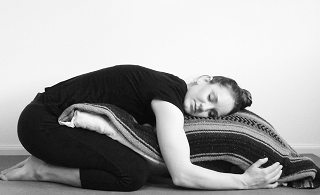
Child's Pose
- Camel pose
- Child’s pose
Prone Postures – Powerlessness
- Sphinx
- Locust
- Cobra
- Upward facing dog
- Bow
- Frog
Supine Postures - Trust
- Lying down
- Bridge
- Fish
- Meditation
 EATING DISORDERS
EATING DISORDERS
Eating disorders -- such as anorexia, bulimia, and binge eating disorder – include extreme emotions, attitudes, and behaviors surrounding weight and food issues. Eating disorders are serious emotional and physical problems that can have life-threatening consequences for females and males.
More than 20 million women and 10 million men in the United States have a clinically diagnosable eating disorder. Of this number, about one in ten will actually seek treatment. Ninety-one percent of women in college have dieted and for 86 percent of women who will suffer, the problems were already in place by age twenty.
ANOREXIA NERVOSA
Anorexia Nervosa is a serious, potentially life-threatening eating disorder characterized by self-starvation and excessive weight loss. Anorexia has one of the highest death rates of any mental health condition. Anorexia is one of the most common psychiatric diagnoses in young women. Approximately 90-95% of anorexia sufferers are girls and women.
BULIMIA NERVOSA
Bulimia Nervosa is a serious, potentially life-threatening eating disorder characterized by a cycle of bingeing and compensatory behaviors (such as self-induced vomiting, exercise, use of laxatives) designed to undo or compensate for the effects of binge eating.
Bulimia is frequently associated with symptoms of depression and changes in social adjustment.
Approximately 80% of bulimia nervosa patients are female.
BINGE EATING DISORDER
Binge eating disorder (BED) is an eating disorder characterized by recurrent episodes of eating large quantities of food (often very quickly and to the point of discomfort); a feeling of a loss of control during the binge; experiencing shame, distress or guilt afterwards; and not regularly using unhealthy compensatory measures (e.g., purging) to counter the binge eating. Binge eating disorder is a severe, life-threatening and treatable eating disorder. Common aspects of BED include functional impairment, suicide risk and a high frequency of co-occurring psychiatric disorders.
Binge Eating Disorder is the most common eating disorder in the United States. Binge eating disorder affects women slightly more often than men—estimates indicate that about 60% of people struggling with binge eating disorder are female and 40% are male.
People struggling with binge eating disorder often express distress, shame and guilt over their eating behaviors. They report a lower quality of life than those without binge eating disorder.
It is often associated with symptoms of depression. Compared with normal weight or obese control groups, people with BED have higher levels of anxiety and both current and lifetime major depression.
OTHER SPECIFIED FEEDING OR EATING DISORDER
Other Specified Feeding or Eating Disorder (OSFED), is a feeding or eating disorder that causes significant distress or impairment but does not meet the criteria for another feeding or eating disorder.
Examples of OSFED Include:
- Atypical anorexia nervosa (weight is not below normal)
- Bulimia nervosa (with less frequent behaviors)
- Binge-eating disorder (with less frequent occurrences)
- Purging disorder (purging without binge eating)
- Night eating syndrome (excessive nighttime food consumption)
The commonality in all of these conditions is the serious emotional and psychological suffering and/or serious problems in areas of work, school or relationships.
ORTHOREXIA NERVOSA
Orthorexia Nervosa, a term which literally means “fixation on righteous eating” and having an “unhealthy obsession” with otherwise healthy eating. Orthorexics become fixated on food quality and purity. Self-esteem becomes wrapped up in the purity of orthorexics’ diet and they sometimes feel superior to others, especially in regard to food intake.
Orthorexics may be socially isolated, often because they plan their life around food. They may have little room in life for anything other than thinking about and planning food intake. They share a predisposition for perfectionism, anxiety, rigidity, obsessive compulsive tendencies, and a need for control manifested through food as present with other eating disorders.
FOOD ADDICTION
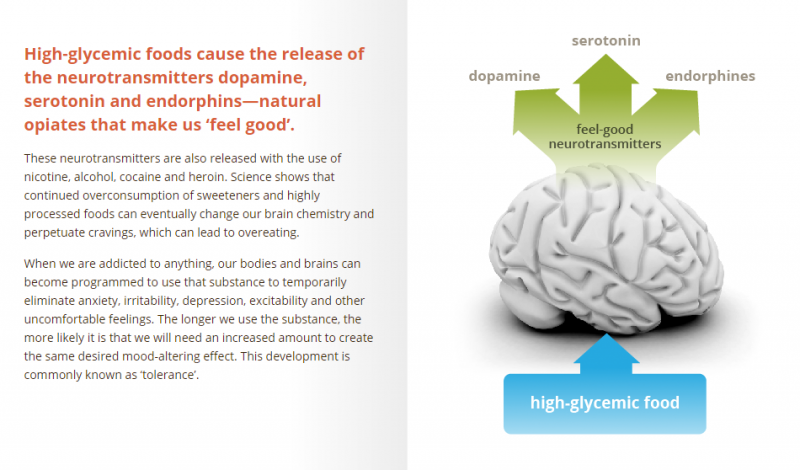
How Food Addiction Affects the Brain
EATING DISORDERS AND YOGA
“Yoga provides tools for coping with the trials and tribulations of letting go of addictive patterns.” Sarahjoy Marsh
Yoga helps people reconnect with their bodies. YogaFaith creates space for connection with God, themselves and others.
YOGA FOR EATING DISORDERS
Classes suggested:
- YogaFaith Yin, a style of becoming still, postures are held 3-5 minutes. Allowing the Holy Spirit deep into all the body's systems.
- YogaFaith Restorative, a calming and relaxing style where no tension exists in the body. Meditating on Christ while finding rest for the mind and soul.
- Gentle YogaFaith, could be a variation of styles - gentle and slow movements while worshiping the Lord.
YOGA RX: 2 – 3x a week. Start slowly, move mindfully, and move with a purpose.
- Work with breath and stress relief
- Breath prayers and meditations are ideal: Inhale - I am - Exhale - Beautifully created
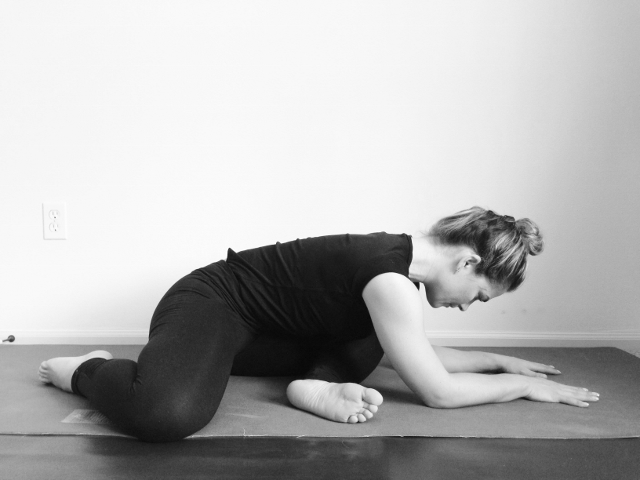
Modified Pigeon
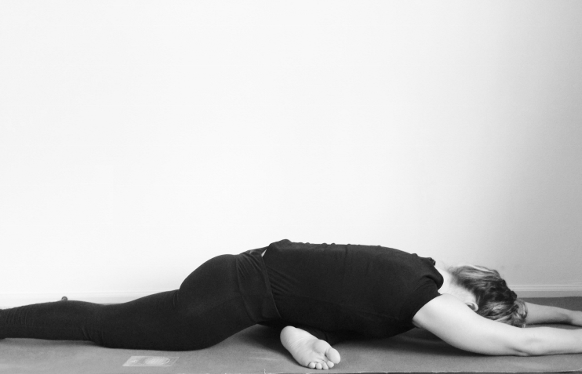
Pigeon
YOGA POSTURES:
- Halasana - Plow pose
- Dhanurasana – Bow pose
- Sirsasana - Headstand pose
- Tadasana - Mountain pose (Grounding)
- Kapotasana – Pigeon pose (Hips and opening the heart)
- Surya Namaskar – Sun Salutation Series – slow, mindful, x 3 rounds
- Additional postures: Staff pose, Bound Angle, Knees to Chest/Wind relieving pose, and Locust.
Chakras to focus on: Root, Heart, and Sacral - however, eating disorders affect all our God-given energy centers.
Grounding postures: Warrior 1 and 2, Goddess, Standing Squat, Child, and Prayer Squat to connect with the body, to become rooted to the earth, to build strength and courage. Feel free to use stones such as Lava, known to ground and root through Christ.
If depression is a strong contributing factor, back bending poses will be beneficial for their energizing, tonifying and heart opening.
If anxiety is a primary contributing factor, forward bends can be utilized for their calming and nurturing aspects.
PRANAYAMA: Dirga Pranayama for calming, grounding and nurturing use in conjunction with Nadi Sodhana for balancing, calming and reducing anxiety.
YOGA NIDRA: 2x per week
MEDITATION: Use guided meditation, conscious relaxation, and work towards individual meditation. Work on breath awareness, focusing on observation, stillness and surrender. See YogaFaith's Christian Meditation and Nidra Scripts.
10 Steps to Positive Body Image by the National Eating Disorder Association
One list cannot automatically tell you how to turn negative body thoughts into positive body image, but it can introduce you to healthier ways of looking at yourself and your body. The more you practice these new thought patterns, the better you will feel about who you are and the body you naturally have.
- Appreciate all that your body can do. Every day your body carries you closer to your dreams. Celebrate all of the amazing things your body does for you—running, dancing, breathing, laughing, dreaming, etc.
- Keep a top-ten list of things you like about yourself—things that aren’t related to how much you weigh or what you look like. Read your list often. Add to it as you become aware of more things to like about yourself.
- Remind yourself that “true beauty” is not simply skin-deep. When you feel good about yourself and who you are, you carry yourself with a sense of confidence, self-acceptance, and openness that makes you beautiful. Beauty is a state of mind, not a state of your body.
- Look at yourself as a whole person. When you see yourself in a mirror or in your mind, choose not to focus on specific body parts. See yourself as you want others to see you — as a whole person.
- Surround yourself with positive people. It is easier to feel good about yourself and your body when you are around others who are supportive and who recognize the importance of liking yourself just as you naturally are.
- Shut down those voices in your head that tell you your body is not “right” or that you are a “bad” person. You can overpower those negative thoughts with positive ones. The next time you start to tear yourself down, build yourself back up with a few quick affirmations that work for you.
- Wear clothes that are comfortable and that make you feel good about your body. Work with your body, not against it.
- Become a critical viewer of social and media messages. Pay attention to images, slogans, or attitudes that make you feel bad about yourself or your body. Protest these messages: write a letter to the advertiser or talk back to the image or message.
- Do something nice for yourself — something that lets your body know you appreciate it. Take a bubble bath, make time for a nap, or find a peaceful place outside to relax.
- Use the time and energy that you might have spent worrying about food, calories, and your weight to do something to help others. Sometimes reaching out to other people can help you feel better about yourself and can make a positive change in our world.
Interested in healing addiction and body image issues? YogaFaith has an in depth Christian Yoga 12 Step and Recovery program.


